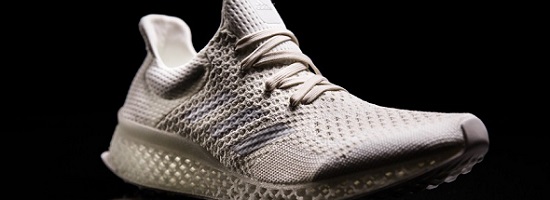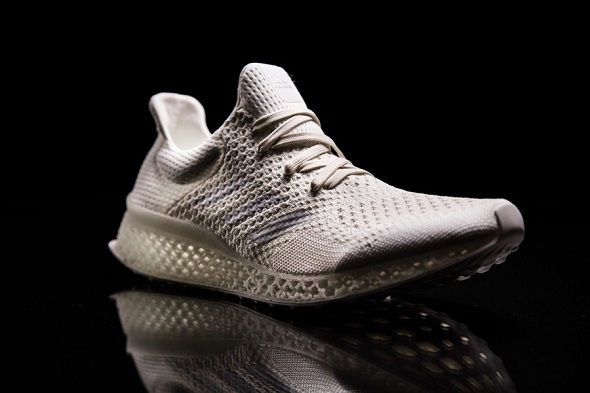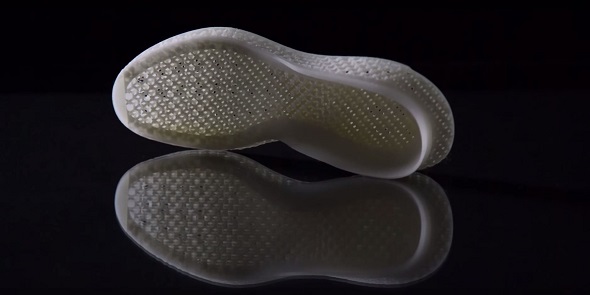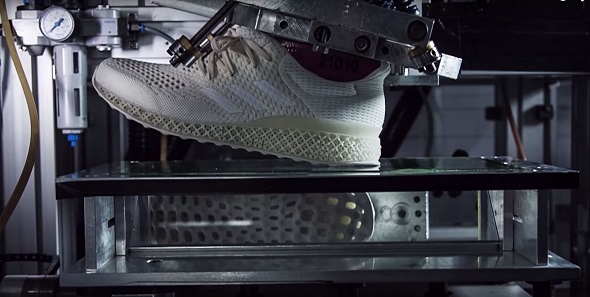
adidas Futurecraft: The Ultimate 3D Printed Personalized Shoe
Sporting goods giant adidas is unveiling the future of performance footwear with Futurecraft 3D, a unique 3D printed running shoe midsole which can be tailored to the cushioning needs of an individual’s foot. As part of the ‘Futurecraft series’, this forward-looking initiative places open source collaboration and craftsmanship at the heart of design to drive innovation across all elements of production.
Imagine walking into an adidas store, running briefly on a treadmill and instantly getting a 3D-printed running shoe – this is the ambition of the adidas 3D-printed midsole. Creating a flexible, fully breathable carbon copy of the athlete’s own footprint, matching exact contours and pressure points, it will set the athlete up for the best running experience. Linked with existing data sourcing and footscan technologies, it opens unique opportunities for immediate in-store fittings.
In order to provide the ultimate personalized experience for all athletes, adidas created a unique combination of material and process. The production breakthrough will take the running shoe standard to the next level, offering unprecedented individualized support and cushioning for every foot, to enable athletes to perform at their best.
Futurecraft 3D is a prototype and a statement of intent. We have used a one-of-its-kind combination of process and material in an entirely new way. Our 3D printed midsole not only allows us to make a great running shoe, but also to use performance data to drive truly bespoke experiences, meeting the needs of any athlete.
Eric Liedtke, Executive Board Member of adidas AG.
For adidas Futurecraft 3D, Materialise assisted adidas with the generation of a lightweight structure in the 3D printed midsole which would keep the shoe at a comfortable weight. The design and engineering team at Materialise worked with 3-matic STL to create the structure, improving the midsoles’ flexibility without compromising on rigidness and strength. The midsoles were then laser sintered in TPU, the first durable fully-flexible 3D printing material to be used in a consumer product, through Materialise’s certified manufacturing process. Additive Manufacturing automation and control software Streamics provided an overview of the entire production process, ensuring the traceability and repeatability which is crucial to the manufacturing of end-use consumer products.
“Working on this project with adidas has been a great opportunity for Materialise’s certified manufacturing process,” says Haritz Elexpuru, Materialise, who coordinated the collaboration. “From software, to rapid prototyping, to manufacturing: all of Materialise’s strengths have played their part for Futurecraft.”
Next Steps: The Futurecraft Series
The Futurecraft 3D story is the first chapter of the adidas Futurecraft series, which demonstrates the brand’s commitment to innovating throughout all areas of production.
“Futurecraft is our sandbox. It is how we challenge ourselves every day to explore the boundaries of our craft,” said Paul Gaudio, Creative Director, adidas. “Driving material and process innovation, bringing the familiar into the future. Marrying the qualities of handcrafting and prototyping with the limitless potential of new manufacturing technologies. Futurecraft is stripped back – fast, raw and real – it is our approach to design.”
True to what adidas terms as the Futurecraft vision of creative collaboration, Futurecraft 3D is made possible through an open source partnership between adidas and Materialise. Keep an ear to the ground for announcements from the Futurecraft initiative in the next six months, heralding more groundbreaking design innovations.
All images courtesy of adidas. For more information about Futurecraft 3D, visit news.adidas.com and adidas YouTube.
Recommended Articles
No related posts.





